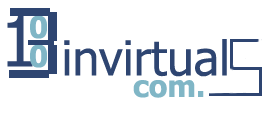How to Become a Python Developer
“How to Become a Python Developer” can be an excellent way to share your knowledge and insights with aspiring developers. Here’s a step-by-step guide on how you can structure your blog:
1. Introduction:
– Provide a brief overview of Python and its significance in the programming world.
– Explain why Python is a popular choice for beginners and experienced developers alike.
– Highlight the demand for Python developers and the wide range of opportunities available in the field.
2. Getting Started with Python:
– Introduce the basics of Python programming, including variables, data types, control flow, and functions.
– Recommend resources, such as online tutorials or books, to learn Python effectively.
– Mention any specific Python versions or environments that are commonly used in the industry.
3. Learning Resources:
– List popular online platforms, books, courses, and tutorials that aspiring developers can utilize to learn Python.
– Provide insights into the advantages and limitations of each resource.
– Include personal recommendations or success stories from experienced Python developers.
4. Building a Strong Foundation:
– Discuss essential programming concepts and best practices, such as object-oriented programming (OOP), modular programming, and code readability.
– Explain the importance of writing clean, maintainable, and efficient code.
– Offer tips on debugging techniques and using Python’s built-in tools.
5. Essential Python Libraries and Frameworks:
– Introduce commonly used Python libraries and frameworks, such as NumPy, Pandas, Django, Flask, and TensorFlow.
– Explain their functionalities and use cases in different domains.
– Provide examples or links to resources for learning these libraries and frameworks.
6. Web Development with Python:
– Discuss the basics of web development using Python, including HTML, CSS, JavaScript, and backend frameworks like Django or Flask.
– Explain how Python integrates with databases, APIs, and other web technologies.
– Offer step-by-step tutorials or code snippets for building a basic web application.
7. Python for Data Science and Machine Learning:
– Explain the role of Python in data science and machine learning.
– Discuss popular data science libraries like NumPy, Pandas, and scikit-learn, and machine learning frameworks like TensorFlow and PyTorch.
– Provide resources or tutorials for getting started with data science and machine learning using Python.
8. Contributing to Open Source and Collaboration:
– Encourage readers to contribute to open-source projects and participate in collaborative coding.
– Explain the benefits of open-source contributions for personal growth and professional development.
– Provide guidance on finding and getting involved in open-source projects.
9. Career Opportunities and Growth:
– Discuss the various career paths available for Python developers, such as web development, data science, machine learning, or automation.
– Share insights on job market trends, salary ranges, and in-demand skills.
– Offer advice on building a strong professional profile, including creating a portfolio, showcasing projects, and networking.
10. Continuous Learning and Resources:
– Emphasize the importance of continuous learning and staying up to date with the latest Python developments.
– Recommend blogs, podcasts, newsletters, and online communities where readers can stay connected with the Python community.
– Highlight the significance of attending conferences, meetups, or webinars for networking and knowledge sharing.




